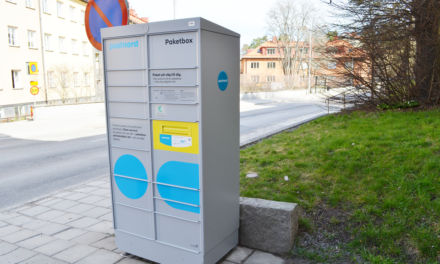
Passing the MOT

Nearly a third (31%) of UK online shoppers have switched to a different e-retailer as a result of encountering minimum order thresholds (MOTs), according to the JDA/Centiro Customer Pulse 2016 Report conducted by YouGov. However, the survey found that 29% of online shoppers have bought more items in order to take their basket over the minimum order threshold.
The survey also highlighted how important choice has become to the online consumer, as 33% chose an alternative delivery/collection option – even if it was less convenient or took longer.
‘Last-mile’ issues continue to be a major concern in 2016. Indeed, the Customer Pulse Report 2016 suggested that there has actually been an increase in UK adults experiencing problems with online orders: 53% said they had experienced a problem with an online order during the last 12 months, compared with 47% in 2015. Late deliveries (42%) and missed deliveries (36%) continued to be the biggest issues.
“Raising minimum order values and charging for Click & Collect orders is a big consideration for retailers as they look to boost the profitability of their online operations. However, as our research findings show, retailers must recognise that different customers are reacting differently when such restrictions are thrust upon them. This split in reactions suggests retailers need to segment their customers in order to tailor services offered to them,” said Jason Shorrock, vice president, retail strategy EMEA at JDA.
“Last-mile delivery and collection issues continue to be major pain points for many retailers, and solving these problems is both an economic and operational challenge. Retailers are making considerable investments in their delivery and collection offerings, yet at the same time the majority of customers still expect the fulfillment of online orders to be free of charge.”
Interestingly, 60% of the survey respondents thought that the retailer should be responsible for resolving delivery problems, compared to only 33% who believed it should be the delivery company. When it came to consumers’ experience of getting the issue resolved, 66% of those respondents who had encountered an issue said they had received a good experience. However, there was still a substantial 26% that said they had a poor experience.
“Retailers need to be more confident in their last-mile capabilities, otherwise these issues will continue to reflect poorly on the overall brand experience customers receive. This is one of the reasons we have seen the likes of Amazon bring more of its delivery function in house over the last 12 months,” commented Niklas Hedin, CEO of Centiro. “Today there are greater pressures on retailers’ delivery capabilities than ever before and if customers’ expectations aren’t met, they will simply shop elsewhere in the future. Through improved visibility into delivery networks retailers can help ensure that customer promises are kept. In the future, predictive analytics will also help retailers and delivery companies pre-empt problems before they happen, taking the customer experience to the next level.”
The report found that Click & Collect is on the rise, with 54% of respondents stating they had used it over the past 12 months compared to 49% in 2015. Of those that have used Click & Collect, avoiding delivery charges (59%) remained the most common reason for doing so, followed by it being more convenient than home delivery (54%).
Meanwhile, nearly two-thirds (63%) of the respondents stated that the ease of being able to return items influenced their choice of online retailers. However, the research also revealed that there is differing customer behaviour around returns. For non-grocery items, 36% of respondents stated they don’t return any items in an average year, 32% return up to two items, and a further 23% return three or more items.
Of those who had returned items purchased online, 42% said they had done so as it was not what they were expecting. A further 34% stated the item was faulty, while 19% admitted they had ordered several alternatives with the intention of returning the items they did not want.
“Returns continue to put stress on retailers, both from an operation and margin perspective. Successfully managing their return levels continues to represent a challenge for them. Retailers need to especially understand those ‘serial returners’ that buy multiple items with the intention of returning the goods they do not want. This is very expensive, so these shoppers need to be encouraged to come into store more often or only be offered a limited number of free returns,” commented Shorrock.
“Retailers are increasingly offering alternative fulfillment options to better serve customers, but they do have to take care to manage this increased operational complexity in a profitable manner,” concluded Shorrock. “The successful and profitable retailers will be those that segment their customers and align this insight with their supply chains, to help deliver a better and more cost efficient service to customers.”













